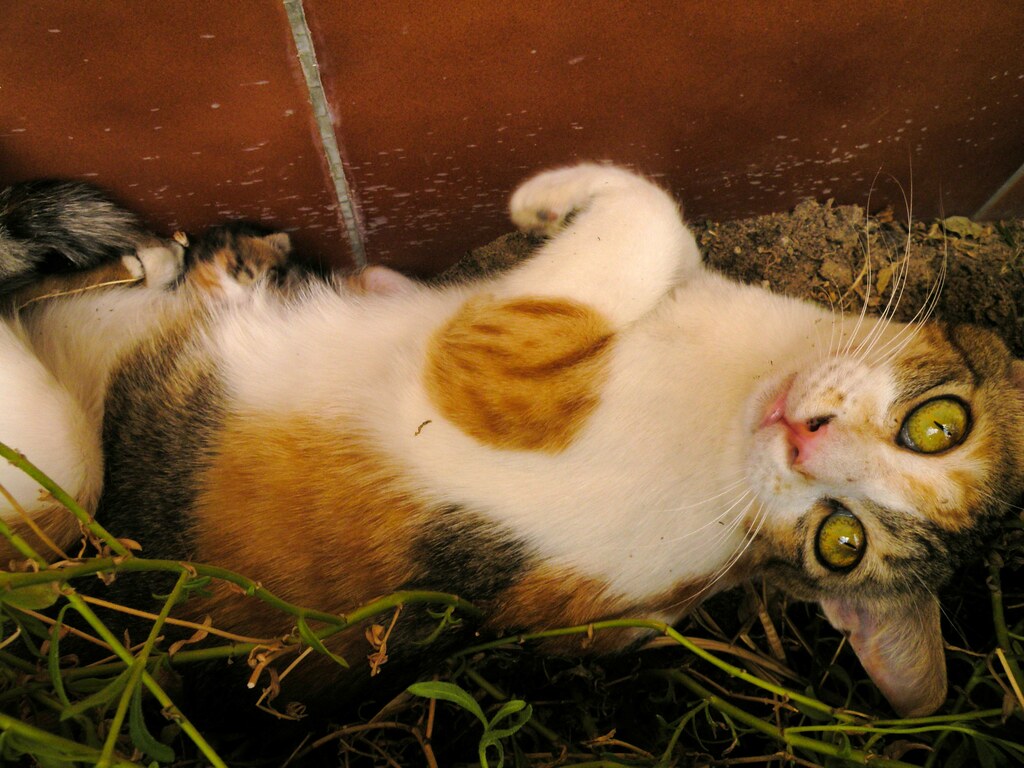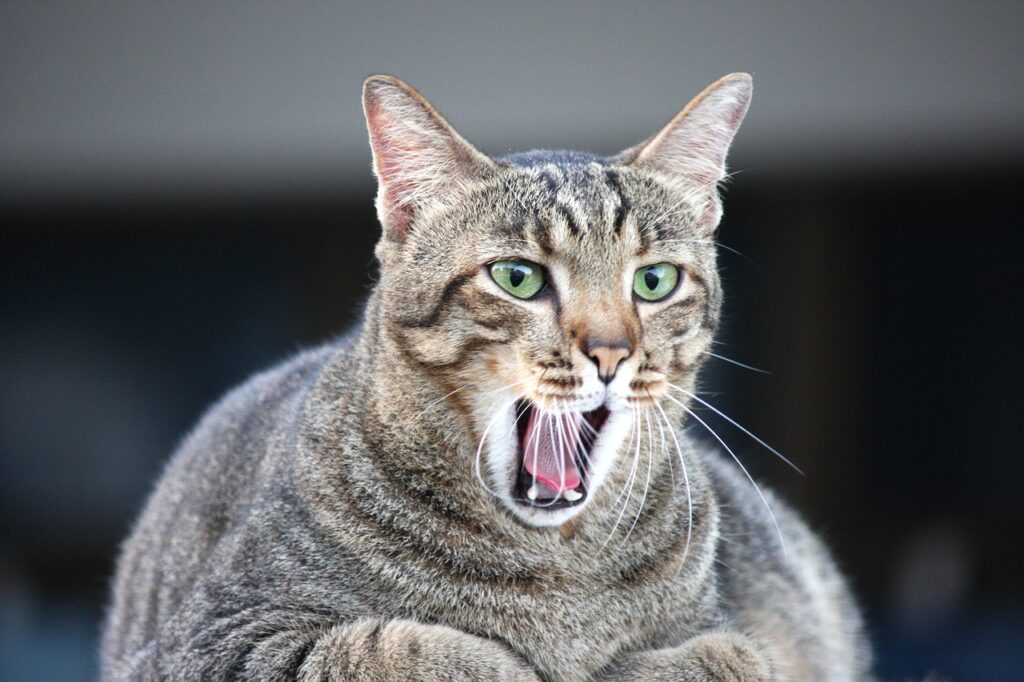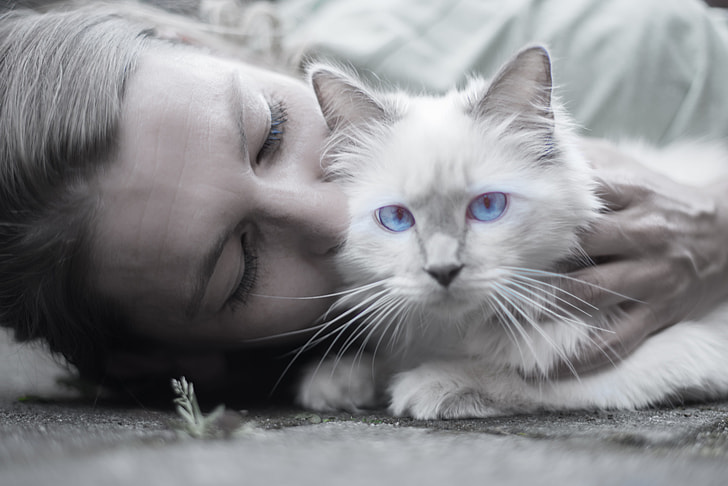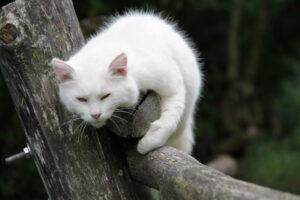How Many Times Can A Cat Get Pregnant In A Year ?

How Many Times Can A Cat Get Pregnant In A Year :- Discovering that your cat is expecting kittens can be a surprising revelation, especially if a litter of newborn felines wasn’t part of your immediate plans. Understanding the duration of your cat’s pregnancy becomes crucial for both you and your pet, allowing for effective planning to ensure their safety and well-being.
Furthermore, if you’re considering finding suitable homes for the kittens, being aware of your cat’s pregnancy timeline becomes essential. The American Society for the Prevention of Cruelty to Animals reports that approximately 3.2 million cats end up in U.S. animal shelters each year, underscoring the importance of responsible pet ownership.
Initiating responsible pet care begins with the fundamental knowledge of how long your cat’s pregnancy lasts, setting the stage for informed decisions and actions in ensuring the welfare of both the mother cat and her potential offspring.

At What Age Can a Cat Get Pregnant?
How Many Times Can A Cat Get Pregnant In A Year ? The potential for a cat to become pregnant emerges as soon as they reach sexual maturity and enter their heat cycles. Typically commencing at 5–6 months of age, some kittens may experience their first heat cycles as early as 3 or 4 months, depending on their birth timing. Female cats who have reached sexual maturity are referred to as “queens.”
These heat cycles occur approximately every two weeks, meaning that if left unaltered, cats can have multiple litters per season. While fertility tends to decrease around the age of 8, the only foolproof method to prevent pregnancy in a cat is to have her spayed. This proactive measure not only prevents unwanted pregnancies but also contributes to the overall well-being and health of the cat.
What Does a Cat In Heat Act Like?
Identifying when your cat is in heat is usually unmistakable due to significant behavioral shifts, including:

1. Vocalization:- Your cat becomes notably vocal, emitting loud meows and yowls in an attempt to attract a mate.
2. Affectionate or Clingy Behavior:-Heightened levels of affection and clinginess may be observed during this period.
3. Rolling on the Floor:- Cats in heat often display a behavior of rolling on the floor, a characteristic gesture associated with their reproductive instincts.
4. Elevating their Backside:- Another indication is the cat elevating its backside, assuming a posture associated with mating behavior.
5. Increased Urination and Urine Odor:- There might be an increase in urination, accompanied by a distinct urine odor. Some cats may also engage in urine marking outside of their litter box.
6. Attempts to Escape Home:- Cats in heat may display a strong desire to escape the home environment in search of a mate.
These heat symptoms typically last from a few days to two weeks. While vaginal discharge or bleeding can occur during this time, it is uncommonly visible, given cats’ adeptness at self-grooming and cleanliness. If you observe these signs in your cat, it’s an indication that they are in the reproductive phase and may be seeking a mate.
How Long Is a Cat Pregnancy?
How Many Times Can A Cat Get Pregnant In A Year ? The gestation period for cats spans approximately two months, typically averaging between 63 to 65 days. This period can be loosely divided into three segments, resembling trimesters, each lasting around 20 days. However, distinguishing between the first two trimesters at home can be challenging due to the subtlety of observable changes during these early stages of feline pregnancy. Monitoring your cat’s health and behavior, along with veterinary guidance, can aid in navigating the various stages of pregnancy and ensuring the well-being of both the mother and the impending litter.

How Many Times Can A Cat Get Pregnant In A Year ? Can cats have kittens by multiple partners?
Certainly, female cats can undergo a phenomenon known as superfecundation, where they can conceive kittens from multiple partners. The number of fathers is not limited to just two males; queens can have as many partners as there are kittens. For instance, if your cat has 3 kittens, each kitten could potentially have a different father. This occurrence adds a layer of complexity to feline genetics and is aptly termed superfecundation.
Interestingly, kittens from the same father can exhibit significant variations in their appearance. Toms carry both dominant and recessive genes, contributing to diverse characteristics in their offspring, such as eye color and fur length.
Female cats typically reach sexual maturity around 4 months of age, allowing them to have kittens as soon as they enter their first heat cycle. It’s worth noting that male cats, or toms, generally display little interest in the parentage of a litter. Unlike some animal species, tomcats rarely engage in paternal care, so they don’t actively participate in or stick around for the parenting responsibilities.
What About Male Cats?
Unlike female cats, male cats don’t experience heats. However, if they are unneutered, they do reach sexual maturity at a similar age to females—typically as early as four months, but often closer to six months of age. Upon reaching reproductive maturity, male kittens may exhibit behavioral changes such as urine marking, emitting pungent-smelling urine, and displaying a heightened interest in venturing outside to seek a mate. Neutering is a common practice to mitigate these behaviors and is often recommended for the overall well-being of the cat and to prevent unwanted mating-related activities.

How many kittens can a cat have in her first litter?
As per the Cats Protection Guide, the number of kittens in a cat’s litter can vary widely, ranging from one to nine kittens. However, the average litter size for most breeds typically falls between four to six kittens. It’s essential to recognize that for a first-time queen (a female cat), the litter size may be smaller than the average, with approximately two to three kittens being common in such cases. The variability in litter size can be influenced by factors such as the cat’s breed, age, health, and individual characteristics.
Preparing for Labor and Delivery
How Many Times Can A Cat Get Pregnant In A Year ? As your cat approaches the final trimester of her pregnancy, it’s crucial to create a designated nesting area for her. Cats instinctively seek out quiet and private spaces for giving birth, and providing a suitable nest is essential. Without a designated area that you can easily observe, your cat might choose a less convenient location.
The ideal birthing nest should strike a balance between allowing you to monitor the cat and kittens for any issues while providing them with ample space. A cardboard box lined with old pillowcases or towels serves as an excellent choice. Ensure that the location is draft-free, as kittens are sensitive to temperature fluctuations and should be kept warm to prevent any risk of getting cold. This thoughtful preparation contributes to a comfortable and secure environment for the impending birth and early days of the kittens.

Signs of a Cat in Labor
The onset of labor in cats often manifests through subtle behavior changes. Most queens will cease eating the day before labor commences, exhibiting signs such as scratching at their chosen nesting spot and a slight sense of agitation. Monitoring rectal temperatures can provide additional insight, with a drop below 100°F indicating that labor is imminent within the next day. During this initial stage, contractions begin, though they are typically not visibly noticeable.
Moving into the second stage of labor, a cat will actively strain as the kittens pass through the pelvis. Each kitten’s delivery usually takes 5–30 minutes, with the kittens born inside sacs of fetal membranes and typically emerging head first.
The third stage of labor is more passive, involving the expulsion of the remaining fetal membranes and the placenta specific to that kitten. It is normal for these membranes to appear greenish-black, and one placenta should be expelled for every kitten. The second and third stages may alternate for each kitten, although it’s not uncommon for a second kitten to be born before completing the third stage for the previous one. Queens typically consume these membranes, a behavior that is considered normal.
While monitoring your cat during labor is important, it’s advisable to refrain from unnecessary interaction or interference unless there are signs of a complicated birth. Cats have the ability to pause labor between kittens, and this break can extend for 24–36 hours. This pause is thought to be more likely if the cat does not feel secure in its environment. Providing a quiet and secure space for the birthing process contributes to the cat’s comfort and the overall success of the labor.

How Many Times Can A Cat Get Pregnant In A Year ? How Long Are Cats in Labor?
In most cases, cats typically complete the delivery of all their kittens within six hours, barring any interruptions in labor, as mentioned previously. While a longer duration between kittens without contractions may be normal, extended and intense contractions are cause for concern. If your cat exhibits visible contractions persisting for more than 20 minutes without the production of a kitten, or if it takes longer than 10 minutes to pass a kitten that is visible in the birth canal, it is crucial to contact a veterinarian promptly. Timely veterinary intervention in such situations is essential to ensure the health and well-being of both the mother cat and the kittens during the birthing process.




